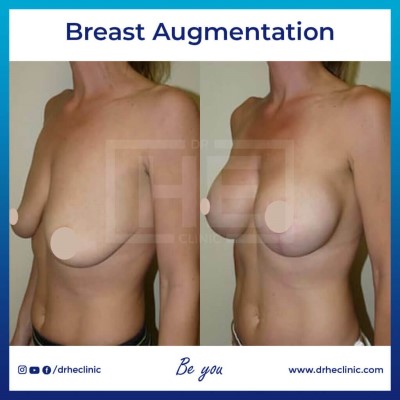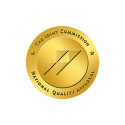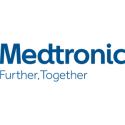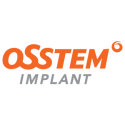Breast Augmentation Turkey
Breast augmentation in Turkey is a highly sought-after cosmetic procedure that enhances the size and shape of the breasts using implants or fat transfer. Turkey is known for offering high-quality breast augmentation at affordable prices, performed by experienced surgeons in advanced medical facilities. Comprehensive care packages include pre-operative consultations, the procedure itself, and post-operative follow-up.

Breast Augmentation in Turkey: A Comprehensive Overview
Breast augmentation in Turkey is a highly sought-after cosmetic procedure aimed at enhancing the size and shape of the breasts. Known for its high-quality healthcare and affordable prices, Turkey has become a leading destination for breast augmentation surgery.
The process begins with a thorough consultation and medical evaluation to determine the patient’s suitability and desired outcomes. During the surgery, implants or fat transfer techniques are used to achieve the desired breast size and shape. The procedure is performed by skilled plastic surgeons using advanced techniques in modern, high-tech facilities.
Breast Augmentation Surgery Steps
1. Lifestyle Modifications
- Dietary Changes: Reducing calorie intake through dietary adjustments, focusing on nutrient-dense foods and limiting high-calorie, low-nutrition items.
- Increased Physical Activity: Incorporating regular physical exercise, such as aerobic activities, strength training, and flexibility exercises, to burn calories and improve overall health.
- Behavioral Changes: Utilizing behavioral therapy techniques to change eating and activity habits, including self-monitoring, setting realistic goals, and developing coping strategies.
2. Medications
- Appetite Suppressants: Drugs that reduce appetite or increase feelings of fullness, helping to decrease food intake.
- Fat Absorption Inhibitors: Medications that interfere with the body’s ability to absorb fat from the diet, reducing calorie intake. These medications are usually prescribed for individuals with a BMI over 30 or those with a BMI over 27 who also have obesity-related health conditions. They must be used under the supervision of a healthcare provider due to potential side effects and contraindications.
3. Bariatric Surgery
- Gastric Bypass: Reduces the size of the stomach and reroutes a portion of the small intestine, limiting food intake and calorie absorption.
- Sleeve Gastrectomy: Involves removing a portion of the stomach, resulting in a smaller stomach size that limits food intake.
- Adjustable Gastric Band: Involves placing a band around the upper part of the stomach to create a small pouch that restricts food intake. Bariatric surgery is typically considered for individuals with a BMI of 40 or higher, or for those with a BMI of 35 or higher who have serious health conditions related to obesity.
4. Endoscopic Procedures
- Intragastric Balloons: A balloon is placed in the stomach for a period to occupy space and promote a feeling of fullness, reducing food intake.
- Endoscopic Sleeve Gastroplasty (ESG): A less invasive procedure that reduces the stomach’s size using sutures, limiting food intake. These procedures are generally less invasive than bariatric surgery and are used for individuals with a lower BMI threshold.
5. Weight Loss Programs and Support Groups
Structured programs that offer a comprehensive approach to weight loss, including dietary plans, exercise regimens, and behavioral counseling. Support groups provide a community for sharing experiences, offering encouragement, and maintaining motivation.
6. Alternative and Complementary Therapies
Some individuals explore alternative therapies such as acupuncture, herbal supplements, or meditation. However, the effectiveness and safety of these treatments vary, and they should be approached with caution and discussed with a healthcare provider.
Plan Your Trip to Turkey for Breast Augmentation
| Timeline | Activity | Recommendations |
|---|---|---|
| 6-12 Months Before | Initial Consultation | Consult with your local doctor and a Turkish clinic remotely to discuss eligibility and potential dates. |
| 3-6 Months Before | Medical Preparation | Begin necessary dietary and medical preparations as advised by the surgical team. |
| 1 Month Before | Travel Arrangements | Book flights and accommodation. Arrange for medical visas if necessary. |
| 2 Weeks Before | Final Checks | Finalize all personal and medical preparations. Confirm travel itinerary and local transport in Turkey. |
| Arrival in Turkey | Pre-Op Consultation | Meet with your surgical team in Turkey for a final pre-operative consultation. Undergo any last-minute tests. |
| Day of Surgery | Surgery | Proceed with the breast augmentation surgery as scheduled. |
| 1-2 Weeks Post-Surgery | Recovery in Turkey | Stay in Turkey for initial recovery and follow-up appointments. Follow all post-operative care guidelines. |
| Return Home | Post-Surgery Follow-up | Continue recovery at home with regular follow-ups remotely or with local healthcare providers. |

Need Help? Contact Us!
7/24 Obesity Help Desk
Breast Aesthetics
Breast Augmentation Surgery Cost in Turkey
The average cost of breast augmentation surgery in Turkey ranges from $2,500 to $5,000. This includes the surgeon’s fee, anesthesia, hospital fees, and accommodation. The specific cost of the procedure will vary depending on the type of implants used, the surgeon’s experience, and the complexity of the procedure.
| Region | Average Breast Augmentation Surgery Cost |
 Turkey Turkey | $2,500 – $5,000 or more |
 USA USA | $8,000 – $12,000 or more |
 Canada Canada | $8,000 – $12,000 or more |
 UK UK | £5,000 – £8,000 or more |
 Australia Australia | AUD 8,000 – AUD 15,000 or more |
 Germany Germany | €8,000 – €10,000 or more |
 France France | €7,000 – €10,000 or more |
Why does Breast Augmentation Surgery Cost in Turkey Cheap?
- Exchange rate: Favorable exchange rates for foreign currencies relative to the Turkish lira can make procedures even cheaper for international patients.
- Standardized procedures: Many Turkish clinics employ standardized protocols and techniques for common procedures like Breast Augmentation Surgery, achieving efficiency and cost savings.
How to Reach Turkey?
By Air: Turkey is well-connected with direct flights from major cities around the world. There are international airports in Istanbul, Ankara, Antalya, and Izmir, among others. You can check for flights from your nearest major airport to one of these Turkish cities.
By Sea: Turkey has several ports that receive passenger ferries from neighboring countries and islands. You can travel to Turkey by ferry from Greece, Russia, Ukraine, and other nearby locations. Major ports include Istanbul, Izmir, and Antalya.
By Train: While not as common as air or sea travel, you can also reach Turkey by train from select European cities. The most common routes are from Sofia, Bulgaria, and Bucharest, Romania, to Istanbul. However, train travel to Turkey may require multiple transfers and take longer compared to air or sea travel.
| Departure City | Arrival City | Duration | Estimated Price |
|---|---|---|---|
| 🛫 London (LHR) | 🛬 Istanbul (IST) | ⏰ 3 hours 50 minutes | 💰 $300 |
| 🛫 Manchester (MAN) | 🛬 Istanbul (IST) | ⏰ 4 hours 35 minutes | 💰 $350 |
| 🛫 Paris (CDG) | 🛬 Istanbul (IST) | ⏰ 3 hours 25 minutes | 💰 $280 |
| 🛫 Frankfurt (FRA) | 🛬 Istanbul (IST) | ⏰ 2 hours 55 minutes | 💰 $320 |
| 🛫 Moscow (VKO) | 🛬 Istanbul (IST) | ⏰ 4 hours 25 minutes | 💰 $400 |

Breast Augmentation Before and After Photos
Submit your request for access to before and after photos to see actual patient results from our many cosmetic procedures and treatments at Dr. HE Clinic.
Breast Augmentation Surgery Turkey Reviews


Posted on
Truspilot
Posted on
TruspilotIs it Safe To Have A Breast Augmentation Surgery in Turkey?
Yes, breast augmentation surgery in Turkey is generally safe, particularly when performed by experienced surgeons at reputable clinics. Turkey is known for its high standards in medical care and advanced facilities. However, it’s crucial to do thorough research, check the credentials of the surgeon, and choose a certified clinic to ensure the best results and safety.
Frequently Asked Questions About Breast Augmentation Surgery
Is Breast Augmentation Surgery Painful?
Breast augmentation surgery involves some pain and discomfort, which can be managed with prescribed pain medication. Most patients report that the pain is moderate and improves significantly within a few days to weeks.
What are the Risks of Breast Augmentation Surgery?
The risks of breast augmentation surgery include infection, implant complications (rupture, leakage), capsular contracture (scar tissue hardening), anesthesia reactions, changes in sensation, scarring, pain, asymmetry, hematoma (blood accumulation), and the potential need for revision surgery. Discuss these risks with your surgeon before proceeding.
How Long Does Breast Augmentation Surgery Take?
Breast augmentation surgery typically takes 1 to 2 hours to complete.
How Much is Breast Augmentation cost in Turkey?
The cost of breast augmentation in Turkey typically ranges from $2,500 to $5,000, depending on the clinic and the specifics of the procedure.
Things You Should Know Before Your Breast Augmentation in Turkey?
Before your breast augmentation in Istanbul, Turkey, know that the country offers high-quality, affordable procedures performed by experienced surgeons. Ensure you choose a reputable clinic, understand the risks, and have a consultation to discuss your goals and expectations.
QUALITY CERTIFICATES
















Posted on
Truspilot